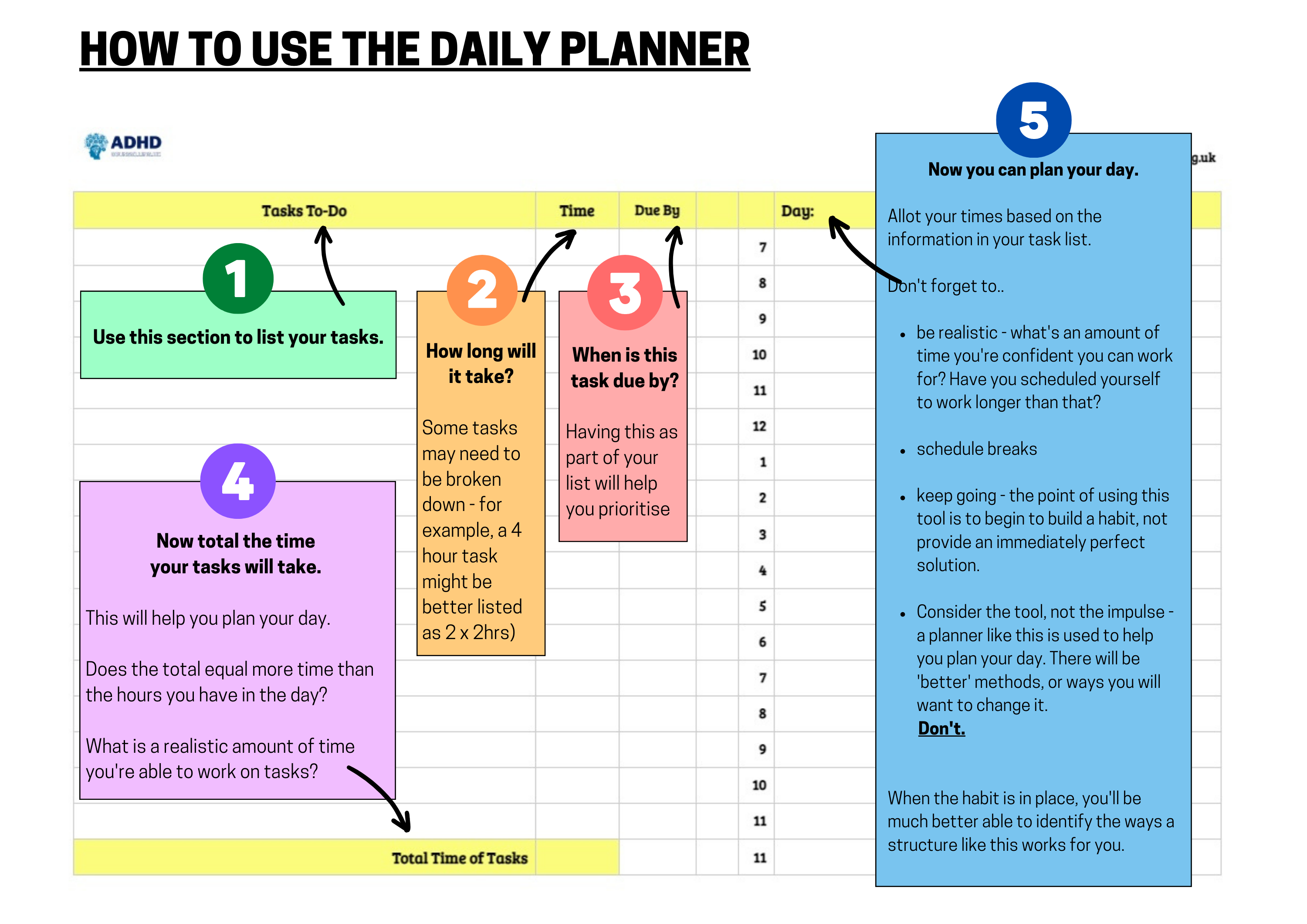
Planner and To-Do List

To-do lists are one of the most common solutions presented to ADHD-ers, and one of the most frustrating. The issue is perhaps not the advice or the tool itself, but perhaps an explanation of how to best use it.

Click here to download To-Do List Template (PDF)
Please note: part of the way these tools work is when they become habitual. This list needs to be completed each day, including at the weekend. A good tip is to set a daily alarm in your phone, usually for just before you go to bed.
1. In the left column of the form, under 'Task List', write down everything you can think of which needs to be done the next day, in no specific order.
2. Under the next column, 'How long will it take?', write how long you think each task in your list will take to complete.
3. Now go to the end of your list, and add up all the time values. The answer to this question will help you set up the rest of your day.
(a) ask yourself how many hours you have today to complete tasks. Because you're (likely) ADHD, then ask yourself a supplemental question - how often have I actually worked solely on the things I have to do for >INSERT HOURS HERE< before? You may have given yourself 9 hours. Have you done 9 hours concentrated work before? Now, give yourself a realistic number.
(b) if your answer to the number of hours you have available is less than the total of your activities, then good news!
(c) if the total times of your activities is greater than your available or capable time, then this marks a typical time an ADHD person would typically enter into a state of overwhelm and condemn themselves to failure. This is why we have the next column.
example: on Saturday, I have approximately 6 hours (a) available, and (b) an amount of time I can reasonably expect myself to work in an organised, focussed way. I wrote out all the things I wanted to do that day, assigned time values, and the sum total was 12 hours of activity. So, I began to prioritise.
4. Prioritise: this list needs to be completed every day, at the same time. Just before bed (so it's not on your mind to remember for the next day) is best practice.
The Feelings Wheel
The Feelings Wheel
Created by psychotherapist Dr Gloria Wilcox, The Feelings Wheel is designed to help people develop language around feelings and emotions, starting with the more basic (the inner circle) and developing into the outer circles.

